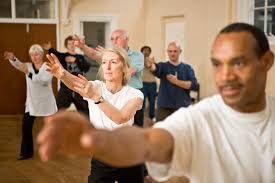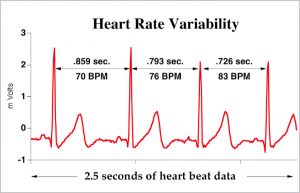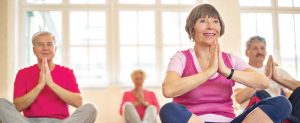Reduce Pain and Relax the Autonomic Nervous System with Mindfulness
By John M. de Castro, Ph.D.
“When we impose a litany of negativity upon our pain, it only becomes worse, and potentially elicits other difficulties including depression and anxiety. When we become more aware of what we are actually experiencing, without the overlay of our judgment, the overall perception of pain is reduced.” – Jennifer Wolkin
We all have to deal with pain. It’s inevitable, but hopefully it’s mild and short lived. For a wide swath of humanity, however, pain is a constant in their lives. At least 100 million adult Americans have chronic pain conditions. The most common treatment for chronic pain is drugs. These include over-the-counter analgesics and opioids. But opioids are dangerous and highly addictive. Prescription opioid overdoses kill more than 14,000 people annually. So, there is a great need to find safe and effective ways to lower the psychological distress and improve the individual’s ability to cope with the pain.
There is an accumulating volume of research findings that demonstrate that mindfulness practices, in general, are effective in treating pain. Mindfulness appears to work by changing how the patient relates to pain rather than actually reducing or eliminating the pain. What is not known is the mechanism by which mindfulness affects chronic pain.
In today’s Research News article “The Role of Heart Rate Variability in Mindfulness-Based Pain Relief.” (See summary below or view the full text of the study at: https://www.ncbi.nlm.nih.gov/pmc/articles/PMC6994350/ ) Adler-Neal and colleagues recruited healthy adult non-meditators and randomly assigned them to either a meditation or sham-meditation group. The group met for 4 25-minute sessions over 7 days and practiced focused breath meditation or sham-meditation. In the sham-meditation sessions the participants were told every 2 to 3 minutes to close their eyes and take a deep breath. They were measured before and after training for respiration and heart rate variability. In addition, the participants underwent noxious non-damaging thermal stimulation on the calf of the leg and rated their pain levels.
They found that after both meditation and sham-meditation training there was a significant reduction in pain intensity. pain unpleasantness, and respiration rate and increase in heart rate variability, with no group differences. They also found for the meditation group only that the greater the heart rate variability the lower the pain unpleasantness ratings.
Heart rate variability refers to the change in the time intervals between consecutive heart beats. Higher levels of HRV are indicative of flexibility in the Autonomic Nervous System and are associated with adaptability to varying environments and lower stress levels. Higher heart rate variability is an indicator of physiological relaxation. This relaxation may well underlie the reduced pain unpleasantness. Since contemplative practices such as meditation increases heart rate variability it makes sense that these practices would also lower the perception of pain.
It is interesting that sham-meditation had similar effects as real meditation on pain and heart rate variability. This suggests that mindfulness reduction in pain may be due to a placebo effect where the participants’ belief that the intervention would reduce pain produced reduced perception of pain. But it could also be that the sham-meditation was actually a mindfulness practice. By focusing the participant’s attention on the breath, it might have increased mindfulness. It remains for future research to investigate this possibility.
So, reduce pain and relax the autonomic nervous system with mindfulness.
“The ancient Buddhist text called the Sullatta Sutta states that mindfulness practitioners have the ability to experience pain but then let go of it.” – Brain Tap
CMCS – Center for Mindfulness and Contemplative Studies
This and other Contemplative Studies posts are also available on Google+ https://plus.google.com/106784388191201299496/posts and on Twitter @MindfulResearch
Study Summary
Adler-Neal, A. L., Waugh, C. E., Garland, E. L., Shaltout, H. A., Diz, D. I., & Zeidan, F. (2020). The Role of Heart Rate Variability in Mindfulness-Based Pain Relief. The journal of pain, 21(3-4), 306–323. https://doi.org/10.1016/j.jpain.2019.07.003
HIGHLIGHTS
- Mindfulness and sham mindfulness meditation reduced pain during noxious heat
- Mindfulness and sham mindfulness meditation increased heart rate variability (HRV)
- Mindfulness-based pain relief was associated with higher HRV
- Higher HRV during sham mindfulness meditation was associated with higher pain
Abstract
Mindfulness meditation is a self-regulatory practice premised on sustaining non-reactive awareness of arising sensory events that reliably reduces pain. Yet, the specific analgesic mechanisms supporting mindfulness have not been comprehensively disentangled from the potential non-specific factors supporting this technique. Increased parasympathetic nervous system (PNS) activity is associated with pain relief corresponding to a number of cognitive manipulations. However, the relationship between the PNS and mindfulness-based pain attenuation remains unknown. The primary objective of the present study was to determine the role of high frequency heart rate variability (HF HRV), a marker of PNS activity, during mindfulness-based pain relief as compared to a validated, sham-mindfulness meditation technique that served as a breathing-based control. Sixty-two healthy volunteers (31 females; 31 males) were randomized to a four-session (25 minutes/session) mindfulness or sham-mindfulness training regimen. Before and after each group’s respective training, participants were administered noxious (49°C) and innocuous (35°C) heat to the right calf. HF HRV and respiration rate were recorded during thermal stimulation and pain intensity and unpleasantness ratings were collected after each stimulation series. The primary analysis revealed that during mindfulness meditation, higher HF HRV was more strongly associated with lower pain unpleasantness ratings when compared to sham-mindfulness meditation (B = −0.82, p = 0.04). This finding is in line with the prediction that mindfulness-based meditation engages distinct mechanisms from sham-mindfulness meditation to reduce pain. However, the same prediction was not confirmed for pain intensity ratings (B = −0.41). Secondary analyses determined that mindfulness and sham-mindfulness meditation similarly reduced pain ratings, decreased respiration rate, and increased HF HRV (between group ps < 0.05). More mechanistic work is needed to reliably determine the role of parasympathetic activation in mindfulness-based pain relief as compared to other meditative techniques.
https://www.ncbi.nlm.nih.gov/pmc/articles/PMC6994350/









